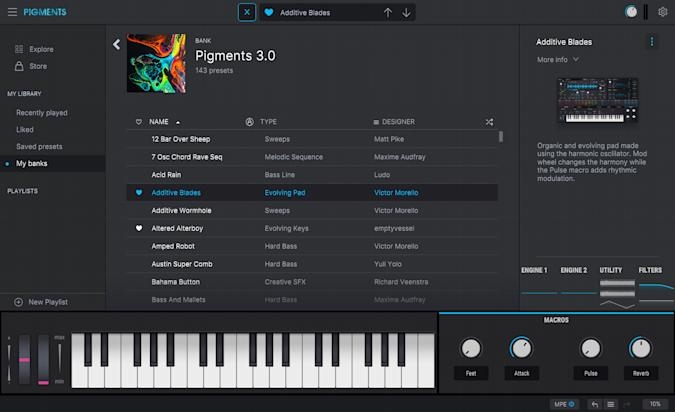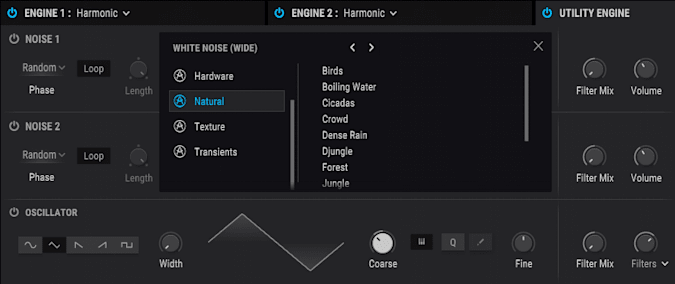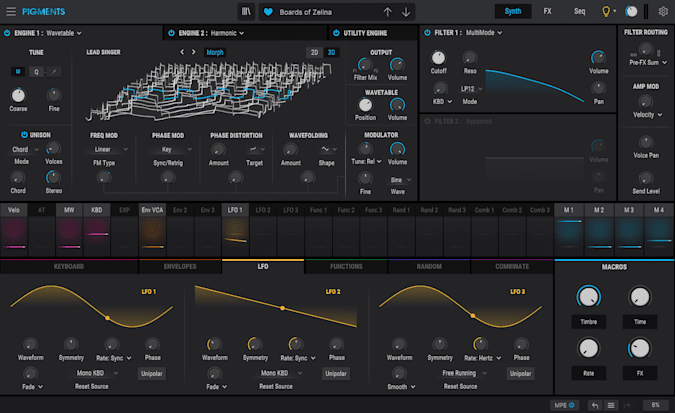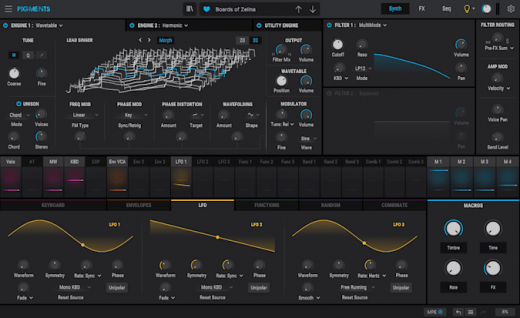Arturia’s free Pigments 3.5 upgrade adds M1 support and a distortion module
Arturia gives its Pigments super synth a massive free update
Pigments 3 adds a harmonic synth engine, a utility layer, 64 new wavetables and four new effects.


I haven’t been shy about declaring Arturia’s Pigments as my favorite soft synth out there right now. It was great when it was originally announced in 2018. And the free, massive upgrade to Pigments 2 in December of 2019 secured it a place on my must have list. Now Arturia is issuing another huge update — Pigments 3 — that adds a new synth engine, a new waveform for its virtual analog engine, 64 new wavetables, a new “utility” engine, four new effects and a bunch of other enhancements. And, just like Pigments 2, it’s free for current owners.
For the uninitiated, Pigments is basically Arturia’s answer to super synths like Native Instruments Massive or Xfer’s Serum. It features a virtual analog engine, a wavetable engine, sample playback with granular synthesis features and now a harmonic engine for additive synthesis. It allows you to combine any two of those, and then manipulate the result with an almost endless number of modulation options.

That harmonic engine is probably the headlining feature of Pigments 3. Harmonic additive synthesis is not a particular common method for sound generation, but it can be quite fun and unique. The TL;DR version is that it uses a combination of sinewaves at different frequencies to generate harmonic overtones. The results are often reedy or organ-like. I’m especially a fan when it comes to low bassy growls and drones. A little bit of detune and reverb can go a long way here. It also has dual morphing formant filters that can sand off some of the harsh edges, allowing you to get vowel like sounds.
Personally I think the most exciting addition is the utility engine. This new third layer to a sound is specifically for adding noise and sub bass. Those aren’t the kinds features that inspire fawning headlines, but they can add a lot of depth and nuance to your sounds. Especially when we’re talking about the sort of crisp digital sounds of a wavetable synth or even the harmonic engine.

What’s interesting though, is the two noise sources are sample based. There’s your standard white noise, but you can also add electronic zaps, the attack of a piano hammer, the buzz of cicadas or even the hiss of a worn down cassette tape. There’s plenty of depth and texture here. My only complaint is that you can’t import your own noise samples. You can import your own samples and wavetables to the main synth engine, so it seems like it would be easy enough to implement here.
The existing synth engines are also getting some upgrades. The virtual analog one is adding a ramp oscillator to complement its sawtooth option. In practice the two sound very similar, but it can make a pretty significant difference in timbre when used as a modulation source, especially in FM.
The other headlining feature here is the addition of four new effects, including the JUN-6 chorus it introduced as a standalone effect in December. There’s also the BL-20 Flanger, a multi-band compressor and a pitched delay effect. The latter essential for getting those shimmer effects that everyone loves (or hates).
There’s also a new lowpass filter based on the company’s Jupiter 8 emulation, some tweaks to the effects routing and 300 new presets to browse. It’s a whole lot of new material.

Of course, the things that haven’t changed — MPE support and easy to navigate, color-coded UI — are just as important as the things that have.
As mentioned, if you’re an existing Pigments owner, the update is free. If you haven’t snatched it up yet, then this is probably the time to do it. To celebrate the launch of Pigments 3 the company is knocking the price down from $199 to $99 until May 13th.
(66)


